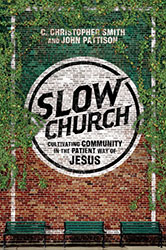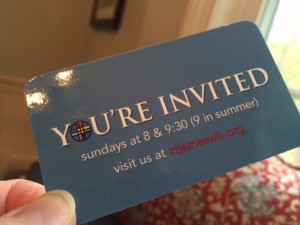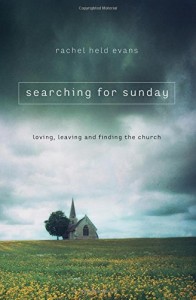After years of driving south to visit my husband’s family in North Carolina, our family has developed a series of designated stopping places that give us just what we need at certain points in our journey. There’s the Delaware rest stop with pretty flower gardens and a playground, which is a perfect place to stretch our legs after the long slog through New Jersey. There’s a particular Chick-Fil-A that is perfectly situated for a late lunch stop. The service is quick. We can count on our kids liking the food, because they’ve eaten it before—and a Chick-Fil-A sandwich always tastes the same, no matter where you are. We don’t need to take time to peruse menus or negotiate with picky palates. We know there will be a clean rest room, and an indoor playscape to keep the younger kids happy when they inevitably finish their lunch before we do. The predictability and efficiency of fast food are perfect for a family on a long road trip. When it comes to everyday eating, of course, fast food isn’t so appealing. Not only does fast food generally have a poor nutrition profile, but its perfectly consistent taste takes a lot of the fun and adventure out of cooking and eating new things, or the same old things in new combinations and new preparations. For everyday home cooking, “slow food”—food prepared with care and patience, based on what foods are locally available and in season, geared toward the tastes of the people who will be eating it—is a far healthier and sustainable way to eat.
 In their book Slow Church: Cultivating Community in the Patient Way of Jesus, John Pattison and Chris Smith pose the same sorts of questions about church communities that we have become accustomed to asking about our food: What is best for long-term sustainability and health, rather than short-term convenience or cost savings? How can we take advantage of local resources? What practices are most likely to foster connections and build up communities? They criticize the “McDonaldization” of church, in which the same values that govern the fast-food industry have come to govern many church communities. Those values are efficiency (e.g., reducing Christian discipleship to a series of straightforward steps), calculability (e.g., defining a church’s success based on membership or other hard numbers), predictability (e.g., the franchising of ready-made church programs without regard to particular communities’ needs, location, and assets), and control (e.g., paying lip service to “lay ministry” but maintaining a system in which the clergy or other leaders make all the decisions and do most of the work).
In their book Slow Church: Cultivating Community in the Patient Way of Jesus, John Pattison and Chris Smith pose the same sorts of questions about church communities that we have become accustomed to asking about our food: What is best for long-term sustainability and health, rather than short-term convenience or cost savings? How can we take advantage of local resources? What practices are most likely to foster connections and build up communities? They criticize the “McDonaldization” of church, in which the same values that govern the fast-food industry have come to govern many church communities. Those values are efficiency (e.g., reducing Christian discipleship to a series of straightforward steps), calculability (e.g., defining a church’s success based on membership or other hard numbers), predictability (e.g., the franchising of ready-made church programs without regard to particular communities’ needs, location, and assets), and control (e.g., paying lip service to “lay ministry” but maintaining a system in which the clergy or other leaders make all the decisions and do most of the work).
Pattison and Smith offer an alternate vision of church that emphasizes patience, connection with particular local communities, and an assumption of abundance rather than scarcity. They provide examples, from their own churches and others, of churches doing things in ways quite different from what we have come to expect. We read about churches in struggling urban areas that elect to stay there, engaging with their neighborhoods in new ways (such as by purchasing and fixing up abandoned properties) rather than leaving for the suburbs. There are churches with shaky bottom lines that, instead of reducing expenses by cutting staff, services, or ministries, increase income by renting space to other groups or starting small businesses. In an effort to respond to people holistically and help nurture faith that goes beyond attendance at Sunday worship, church communities are engaging in sabbath practices together or helping members ponder the meaning of work and vocation.
Slow Church is an energizing, optimistic read, laying out a broad vision, with supporting examples from scripture as well as faith communities around the country, for what “slow church” might look like, and why this model is healthier for churches, neighborhoods, and individuals. Beyond providing some examples to illustrate their points, the authors offer little specific advice for making slow church happen. Given that a defining mark of slow churches is their rootedness in particular local communities with particular needs and assets, this lack of detailed direction makes complete sense, and the authors include questions at the end of each chapter so that churches can more deeply explore how the slow church principles apply to their circumstances. But I occasionally got stumped by the book’s broad vision without much implementation detail, as I thought about my experiences with churches whose worthy and beautiful visions have gotten tripped up by the thorny nature of human interactions.
For example, in one section the authors note that “most of the big-budget items small churches deem to be necessities—especially staff and facilities—are not actually essential.” They go on to say that, while cutting staff shouldn’t be the first course of action in a budget crisis, there is much work, from leading Christian education and planning church music to visiting the sick, that can be done by lay church members. I thought of two churches I’ve belonged to, one of which had no clergy out of conviction, another that was perpetually short-staffed because of tight budgets. In both cases, I (and many others) ultimately got exhausted and burned out by constant volunteer responsibilities. As I read this section, and several others, I longed for more discussion about how the authors’ ideas might be put into practice given very real potential obstacles. Perhaps we need a Slow Church sequel that will address implementation questions in more detail!
But reading Slow Church primarily as a light illuminating a way forward, rather than as a toolbox for the journey, I am optimistic. This book could do wonders for starting fruitful conversation in churches figuring out how and what to be in our increasingly fragmented, secular, and technological society. It would be a terrific book for vestries, elders, and other church governing bodies, including both clergy and lay leadership, to read together. The authors write, “Slow Church happens when people live, work, worship, go to school, eat, grow, learn, heal and play in proximity to each other, often outside the walls of the sanctuary.” Such a vision suggests not merely a healthier way to do church, but a remedy for many of the ills of modern life. The slow church vision has the potential to make Christian communities the bastions of welcome, healing, respite, and inspiration that God has always called them to be.











